AUBURN — The recycling industry changed forever in early 2018, when a Chinese ban on the import of most plastics and other recyclable materials threw global recycling markets into turmoil.
In Maine, the lack of a market and rising costs led several municipalities to debate the merits of longstanding recycling programs, and the resulting conversations left consumers wondering if it was even worth it to participate. What if it was all ending up in a landfill anyway?
Three years later — and through a global pandemic — the industry is still recovering. The market volatility, along with the introduction of new, confusing types of packaging for consumers, has led recycling companies to rethink their approach.
Officials from two of the region’s largest recyclers say the market is getting back on track. They also say that yes, the large majority of items placed in recycling bins are actually being recycled, and thanks to recent education and outreach efforts, average “contamination” levels that prompted the Chinese ban have gone down.
But for many municipalities, including Auburn, the cost of recycling is still higher than it was in previous years, and it will take more money to build better programs.
For elected officials and environmental advocates, the slow emergence from the pandemic is putting a focus back on recycling after COVID-19 took precedence for more than a year. Several pieces of proposed legislation, both in Maine and at the federal level, are in the pipeline, including bills that would place more responsibility on the producers of packaging, and provide direct funding to municipalities to offset the costs of recycling.
The Sun Journal spoke to industry insiders and those working on the front lines of sustainability efforts to gauge the future of municipal recycling programs, and how the one-two punch from China and COVID-19 is transforming the industry.
‘AS CONFUSING AS IT EVER WAS’
In Auburn, Silver Moore-Leamon spent one morning a week for several months helping to build a comprehensive report for city officials to look over.
Fellow members of the city’s Recycling Committee hoped it could be a new start for a city that has struggled to get momentum behind its recycling program. The committee was created after city officials briefly considered ending the city’s recycling program in 2019.
According to the report, only 7% to 8% of Auburn households recycle, compared to between 30% and 50% in similar-sized communities.
According to the U.S Environmental Protection Agency, the overall recycling rate in the U.S. is about 32%.
But, after months of discussions, COVID-19 stopped the work in its tracks. The city has not implemented any of the report’s recommendations, and in the meantime, Moore-Leamon said recycling has only become more complicated during the pandemic.
She used the example of a plastic lemon juice bottle, which features a shrink-wrapped plastic label. Only the bottle can be recycled.
“It’s become disastrously complicated since COVID,” she said. “It’s still as confusing as it ever was. Who knows if you’ve just contaminated a whole batch” by leaving the plastic label on.
The pandemic has thrust new types of packaging into the spotlight, especially as more people came to rely on home deliveries of groceries and prepackaged meals.
Matt Grondin, communications manager at ecomaine in Portland, which services several of Maine’s largest communities, said the types of plastics that can be recycled “haven’t changed too much over the years,” but said what has changed “is the prevalence of the nonrecyclable materials.”
He said some household items that used to come in cardboard or plastic jugs now come in packaging that isn’t recyclable. He used the example of laundry detergent, which now often comes in a plastic pouch or “pods.”
Most often, cereal still comes in boxes, but he said “more and more, there are flexible, zip-top bags that contain some cereals. The same can be said of some home delivery — often in a cardboard box, but more and more, they’re coming in flexible plastic bags, which aren’t recyclable.”
“That ‘evolving ton’ of residents’ recycling is what’s changed, as the ‘light-weighting’ of packaging makes shipping and logistics easier, but recycling more difficult,” he said.
Moore-Leamon said that a lot of times, packaging appears recyclable — complete with a recycling symbol — but actually isn’t recyclable in the single-sort locations.
“It means it’s recyclable, but only if you happen to live in a highly aware community that has really sophisticated recycling. Otherwise, put it in the trash,” she said.

Bales of plastic sit at the ecomaine recycling center in March in Portland. The plastics are shipped to manufacturing plants and turned into new items. Andree Kehn/Sun Journal Buy this Photo
On top of that are the bags of refrigerant that come with prepackaged meals, she said, which she believes has certainly added to material that is not being recycled.
Moore-Leamon said there are small signs of change, however. She recently saw a yogurt container that featured a wrapper with a perforated line and directions to remove the label.
“That was an ‘aha’ moment, because it truly is the only time I’ve seen anybody recognize up front that they’re making it more difficult for us,” she said.
Bob Cappadonna, vice president at Casella Resource Solutions, which runs a processing facility in Lewiston, said the company does not accept items based on whether it features a recycling symbol, because there are thousands of different plastic resins. In an effort to make it simpler for customers, Casella keeps its “acceptable list” of bottles, jars, tubs and lids.
“We want to keep it as simple as possible,” he said.
Cappadonna said he’s not sure he’s seeing more types of unrecyclable packaging introduced, but rather materials like Styrofoam and plastic films from packages, which because they are tedious to remove, are being thrown in bins. Instead of separating the material, it’s easier to simply throw the whole thing in the recycling bin, he said.
Immediately, the 2018 shift amplified the issue of contamination, a term used to describe the level at which items like greasy pizza boxes can spoil large loads of recyclable material.
At ecomaine, Grondin said when China banned imports of material, contamination became a significant issue. Supply and demand was suddenly out of balance, and the remaining buyers didn’t allow for contamination, he said.
But he believes it’s been a blessing in disguise.
“Ultimately, this has been a good thing, in that it forced us to confront the issue of what is — and isn’t — recyclable, and it moved the issue of sustainable waste management to the forefront,” he said.
Sarah Nichols, Sustainable Maine program director at the Natural Resources Council of Maine, said China’s decision “exposed the fundamental flaws” of America’s recycling system, which depended on exporting a large portion of waste to another country.
“It’s putting pressure on growing domestic markets and there’s definitely movement domestically,” she said. “If we’re managing all that material closer to home, we have to face the issue of having all that waste to haul and I think it will lead to more change. If it’s shipped to another country, it’s more out of sight, out of mind. If we’re dealing with it here we can do it better.”
But, she said, it’s going to cost more to do that, which is why the NRCM has been behind a two-year effort to introduce legislation known as extended producer responsibility, or EPR, a model designed to shift some of the costs of disposing of packaging material from consumers to the large companies that produce it.
LEGISLATION TO HAVE PACKAGE MAKERS SHARE THE BURDEN
Nichols said that despite recent gains, the cost to recycle at the municipal level is much more than the cost to dispose of trash, and that it’s unlikely to change anytime soon.
It costs Maine taxpayers about $17 million a year to dispose of packaging overall, according to the Maine Department of Environmental Protection.
The EPR legislation would create a third-party organization to coordinate fees from producers based on the packaging they create, which would then be used to compensate participating municipalities.
The original legislation in 2020 was also a victim of the pandemic, despite support from more than 20 municipalities and entities, including ecomaine.
A new version of the bill has been submitted for the 2021 legislative session, but has not received an LD number yet.
Lewiston was among those that signaled support last year. When Auburn discussed the new version this spring, officials were on the fence.
Chrissy Adamowicz, Sustainable Maine outreach coordinator for the NRCM, told officials that “true recyclability is not part of the design process” for large companies, which leads to much of the current consumer confusion.
“Taxpayers are 100% responsible for a system that their volunteer efforts alone can’t fix,” she said.
She said the legislation targets large companies, or brands that have the capacity to take part. According to the NRCM, at least 500 brand owners that do business in Maine already participate in Canada’s recycling programs through a similar EPR model.

A worker uses a bale of recycled material on a forklift to sweep the floor at ecomaine in Portland in March. The recycling center is capable of sorting 13 to 15 tons of recycled materials per hour. Andree Kehn/Sun Journal Buy this Photo
Adamowicz said that in British Columbia, the wealthiest 5% of businesses fund 80% of recycling programs. That includes places like Amazon and Walmart.
She said the overall goal of the legislation is to alleviate the burden on taxpayers, and create stability for recycling programs so that “municipalities can weather the whims in the global market.”
Asked by Auburn officials about how the fees impact consumer prices, Adamowicz said there’s no evidence from existing EPR programs that product prices are raised as a result.
The Maine Municipal Association was among supporters of the legislation last year, arguing that EPR for packaging “is a step in the right direction by asking producers to be part of the solution.”
If the law is ultimately passed, it will be optional for municipalities to participate, Adamowicz said.
Auburn has not yet signed on in support. During the discussion, Mayor Jason Levesque said “there are still a lot of questions,” including how it could impact Auburn businesses.
According to the legislation, if a business realizes less than $2 million in annual gross revenue, or sells less than one ton of packaging material annually, they would be exempt.
Levesque argued it could be “an arbitrary number that will impact a lot of businesses in Auburn.”
Last year, ecomaine testified in support of the bill, but Nichols said the company has not yet taken a stance on this year’s version.
At Casella, Cappadonna said he believes there’s room for large producers to be involved in recycling.
“I think in the recycling infrastructure we have now, there is a place for the packaging industry to interject or be part of the solution,” he said, adding that any legislation should be formed from best practices taken from countries that have successful programs.
Nichols said Casella has been “hesitant” to endorse the bill so far.
Meanwhile, other related proposals are in the works, including a second EPR-related bill in Maine, as well as federal legislation.
Last week, U.S. Sen. Susan Collins, R-Maine, introduced legislation, dubbed the RECYCLE Act, that proposes to create a federal grant program through the Environmental Protection Agency to help educate households and consumers about residential and community recycling programs.
According to a statement from Collins’ office, the bill would authorize $15 million per year over five years in grant funding; direct the EPA to develop a “model recycling program toolkit” for states and municipalities, and require the EPA to “more frequently review and revise” a set of guidelines used to designate products containing recycled materials and provide “recommended practices for federal agencies to purchase such products.”
Following Collins’ announcement, the NRCM issued a statement on the proposed bill, stating, “We appreciate Sen. Collins’ interest in tackling Maine’s waste crisis. We share her concerns, which is why we are pursuing legislation to reform recycling by making the big corporations responsible for the waste they are creating, instead of continuing to saddle taxpayers with 10s of millions of dollars in waste-related costs every year.”
While a federal EPR-style bill has been floated, Nichols said she’s not confident it will move forward. She believes it will take a number of states passing EPR legislation in order for it to receive more momentum nationally. Maine is one of 11 states considering it.
GETTING CREATIVE
For ecomaine, the volatility of the last few years has resulted in new programs aimed at cutting down on contamination in the recycling stream, which otherwise boosts costs for consumers. The efforts include a “master recycler” program, and the hiring of additional staff to inspect and tag residential recycling bins.
The pilot program in 2019 sent interns to several southern Maine communities, and according to ecomaine, the effort lowered recycling contamination by 5% and saved towns an average of $4,000 in just eight weeks.
After inspecting bins, staff issue green, yellow or red tags based on what’s inside. Bins with red tags are considered overly contaminated and increase costs for the municipality, meaning they will not be picked up by the collection company. The tags also identify items that do not belong in recycling.
“We have seen some really significant results in behavior change due to this program,” said ecomaine Chairman Mike Shaw, who is also Scarborough’s Public Works director. “It makes for an environment that’s easier for our residents to recycle right and keep recyclable materials out of landfills.”

Matt Grondin, communications manager for ecomaine, stands in front of bales of sorted plastics at the Portland recycling center in March. He said the China ban in 2018 ended up being “a good thing, in that it forced us to confront the issue of what is — and isn’t — recyclable, and it moved the issue of sustainable waste management to the forefront.” Andree Kehn/Sun Journal Buy this Photo
The program continued into 2020, and according to a recent news release, will begin again in April in neighborhoods in Portland, Scarborough, South Portland, Westbrook, and Yarmouth. Ecomaine said more communities could be added.
Grondin said the master recycler program stems from conversations about reducing contamination, but said it’s also an effort to engage more people in keeping the program going for more sustainable waste management.
At Casella, Cappadonna said similar outreach and education efforts are ongoing. He said staff has tagged along during pickups and walked with municipal staff to inspect bins. They’ve also implemented an auditing program where municipalities can come in and see the results of its recycling program and contamination percentage.
“Folks want to do the right thing, they’re just not educated,” he said. “Something hands-on like that works.”
Cappadonna said contamination rates at Casella range from as low as 7% in some areas to as high as 14%.
For ecomaine, Grondin said the average contamination rate is about 10% to 12%, which is down from more than 15% three years ago.
THE RECYCLABLES MARKET: ‘I DON’T SEE IT AS BROKEN’
In Auburn, the Recycling Committee’s final report was presented to the City Council in June of last year, but has so far resulted in no action. The committee work has gone quiet.
“What are they going to do when they’re faced with something that’s killing people, and a report on recycling comes up,” said Moore-Leamon referring to the greater concern about the COVID-19 pandemic.
But, she’s hoping that in the coming months, the momentum will return. She’s also hoping that municipalities might be able to use relief funding toward neglected recycling programs.
“We need a consistent, intelligent, understandable, coordinated plan backed by the city,” she said.
She said that plan should include offering residents covered containers like those used by several communities that feature the highest rates of recycling.
She’s also hoping for a day where there’s more public confidence in municipal recycling programs, at least locally.
Grondin said ecomaine has seen markets begin to restructure over the past few years. With China strengthening its ban last year, a lot of materials have found secondary markets in North America, and are manufactured into new items. Other overseas countries like Malaysia have also begun taking items.
“But in the end, we’re moving all of our material to be recycled, and all of it at a positive price now,” he said. “And the trend lately has been that the prices (for recyclable materials) are continuing to go up, as the end markets continue to seek out this material.”
Cappadonna said he doesn’t believe the past few years have changed the public opinion of recycling too much. He said despite some examples of small communities halting their programs, Casella has not seen volumes go down.
“We’ve seen a lot of municipalities keep their programs during some tough times, because when the commodities came back, they didn’t want to be in a spot where they don’t have a program,” he said. “With the value of commodities going down, there’s a misconception that the whole system is broken. I don’t see it as broken.”

Unsorted plastic is dumped by trucks on the ground floor at ecomaine in Portland. The center continues to find markets for recycled materials, helped by campaigns to reduce trash and nonrecyclable materials in recycling bins. Andree Kehn/Sun Journal Buy this Photo
Send questions/comments to the editors.


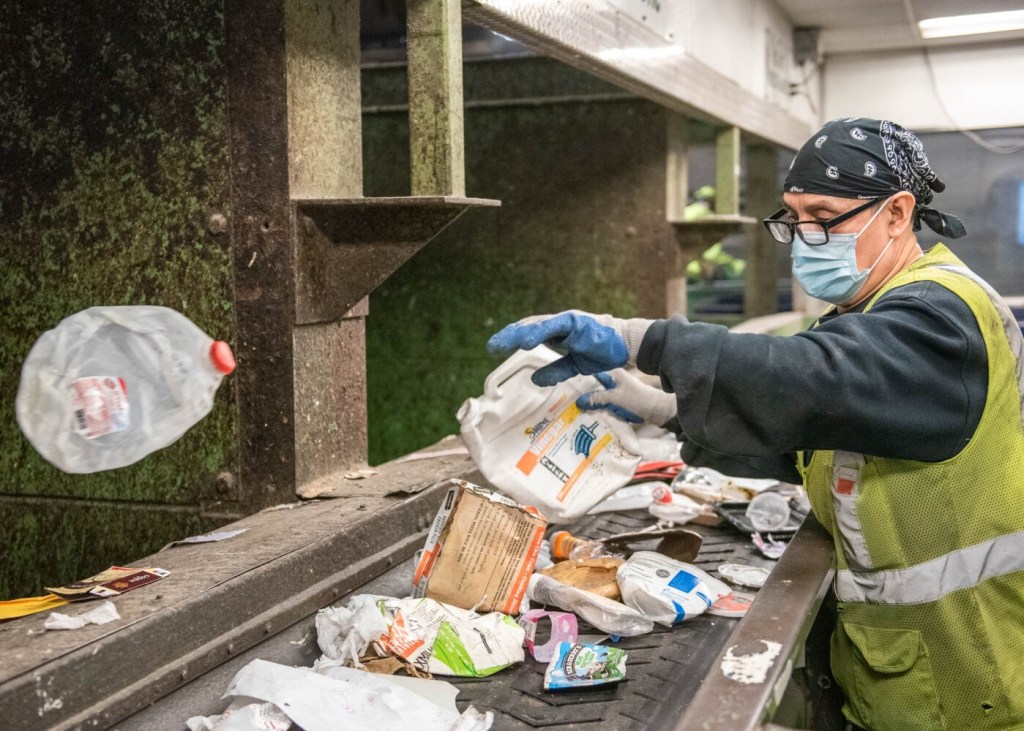
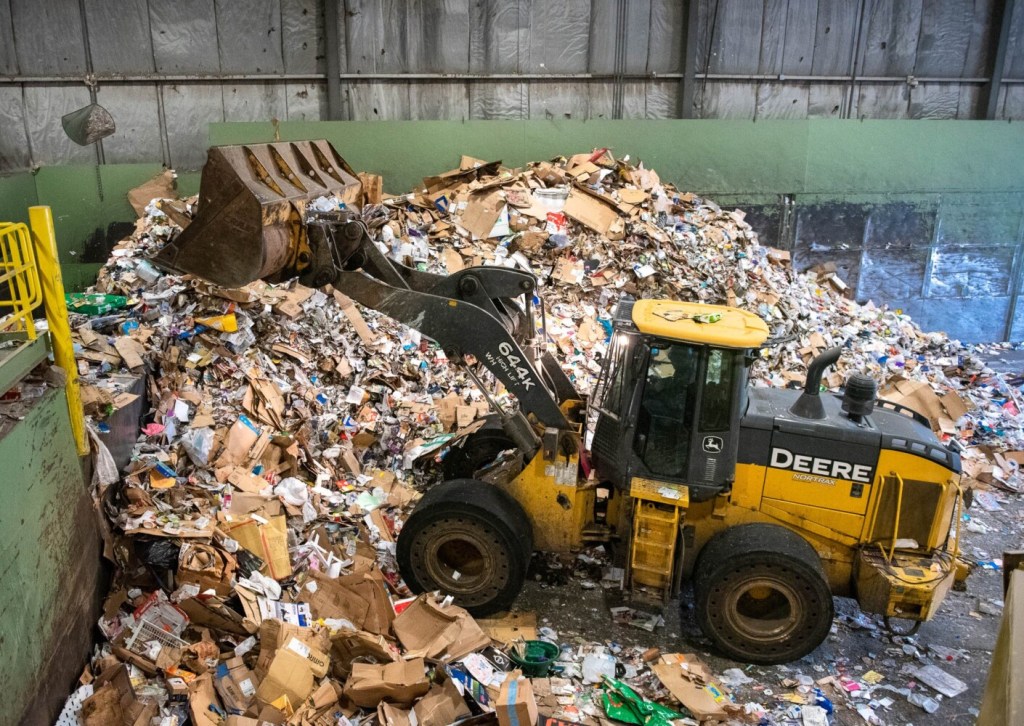
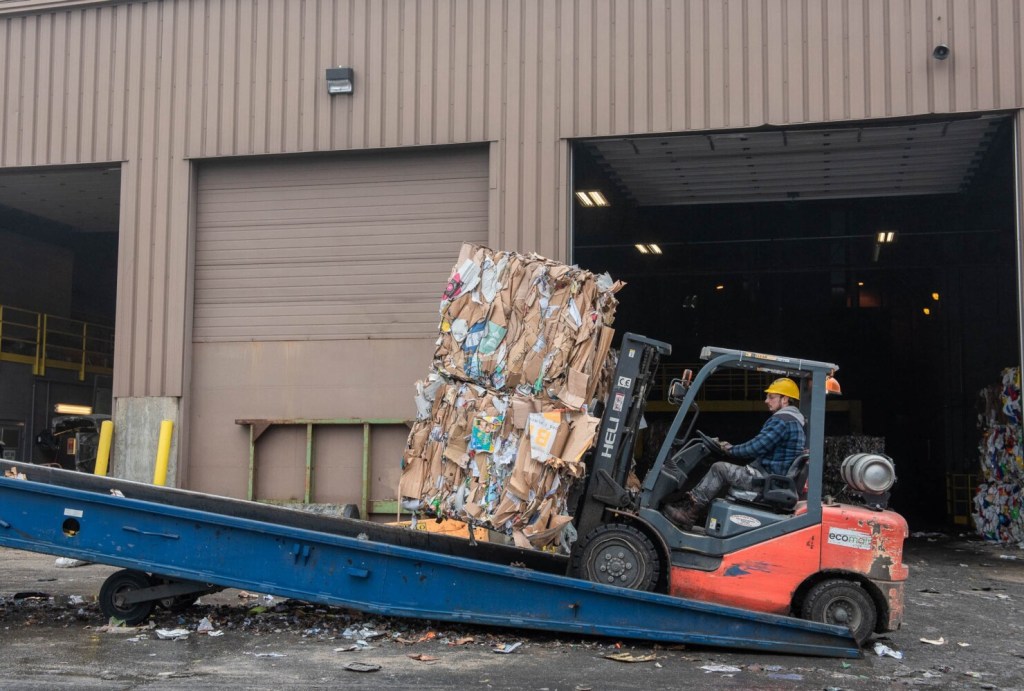
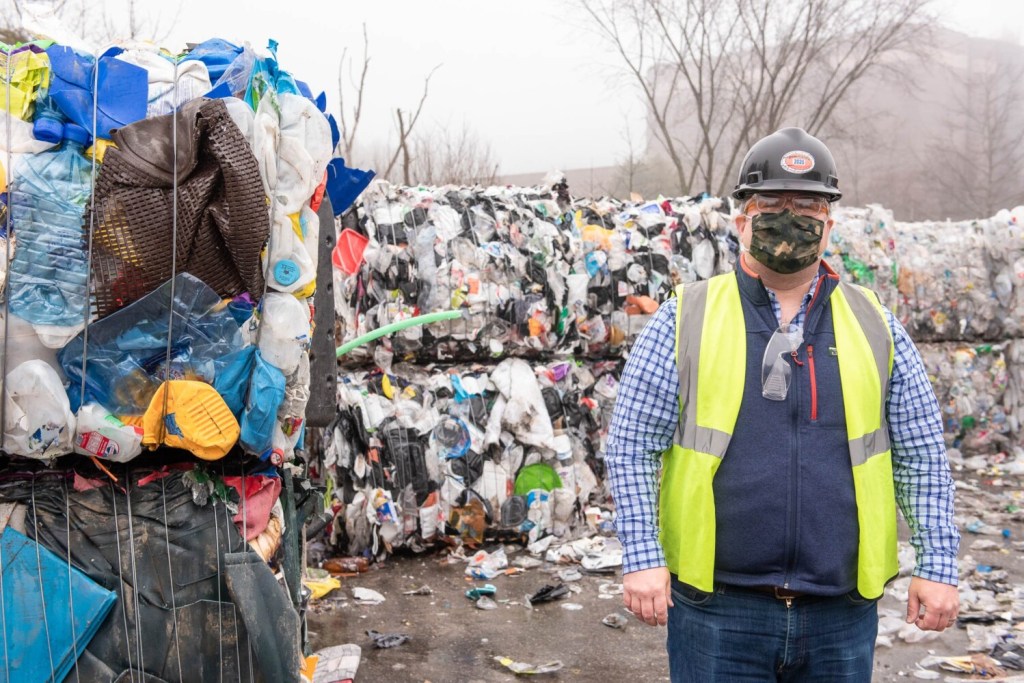
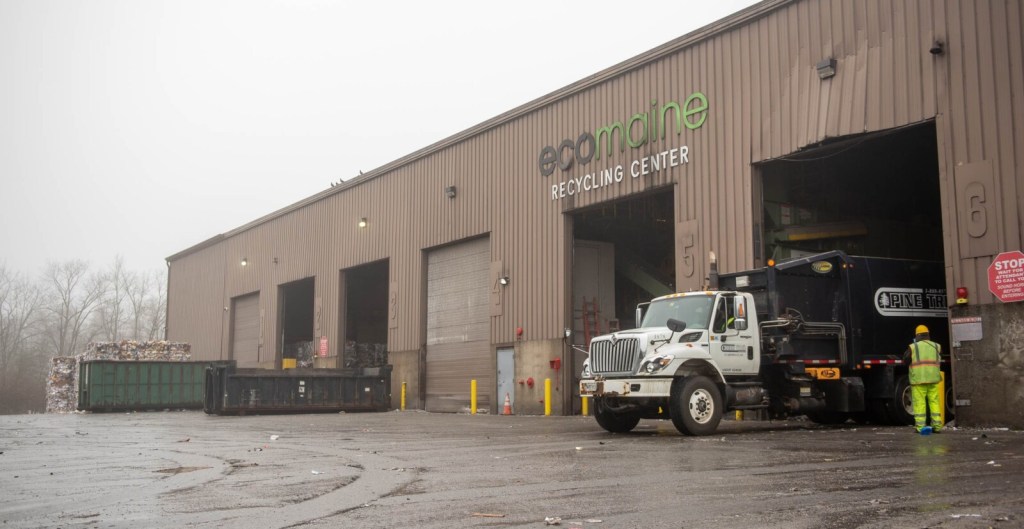
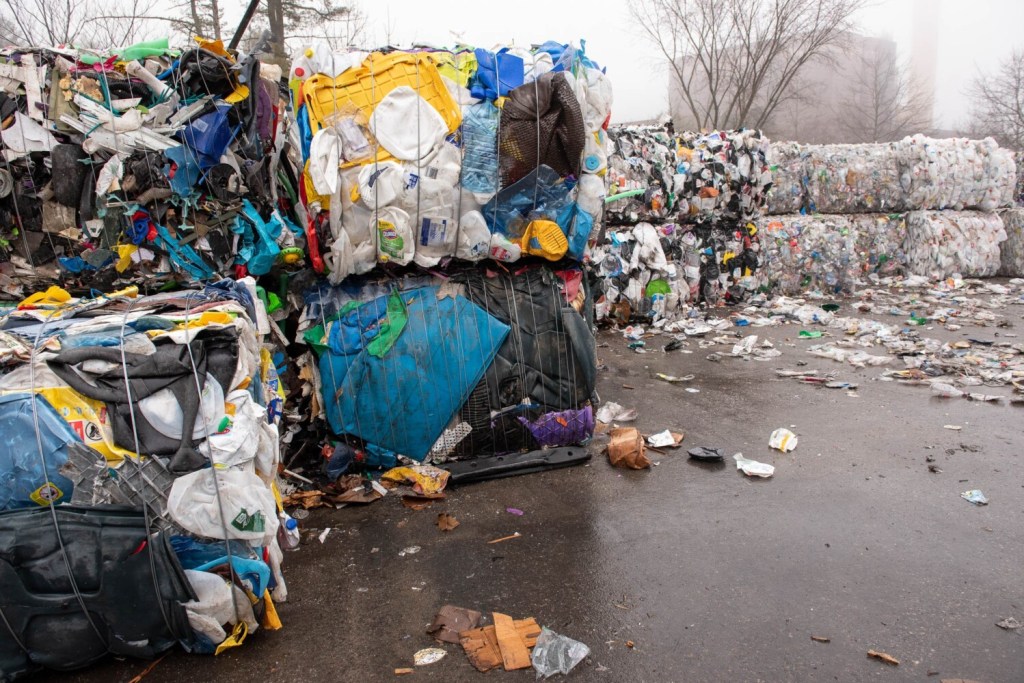
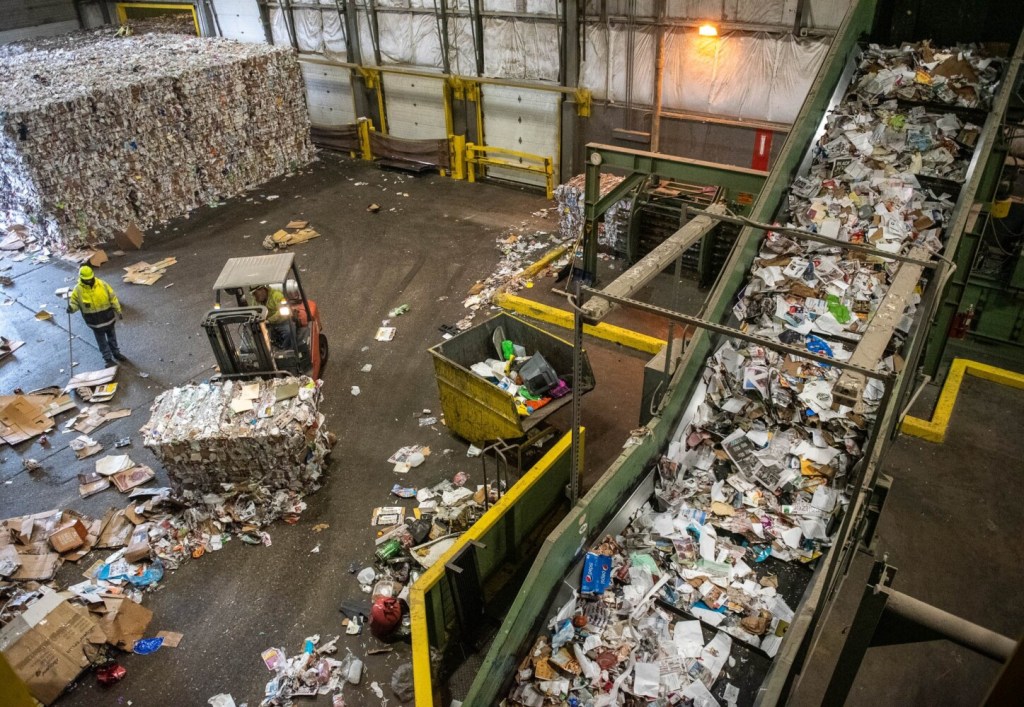

Success. Please wait for the page to reload. If the page does not reload within 5 seconds, please refresh the page.
Enter your email and password to access comments.
Hi, to comment on stories you must . This profile is in addition to your subscription and website login.
Already have a commenting profile? .
Invalid username/password.
Please check your email to confirm and complete your registration.
Only subscribers are eligible to post comments. Please subscribe or login first for digital access. Here’s why.
Use the form below to reset your password. When you've submitted your account email, we will send an email with a reset code.